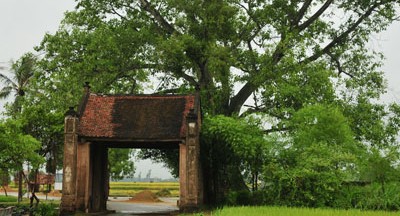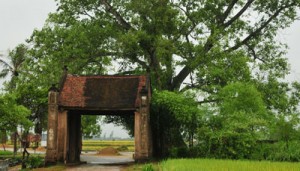The following ancient villages in Vietnam have become favorite tourist destinations through time because of their old-world charm and serenity which visitors always find interesting and stunning.
- Duong Lam, Hanoi. The mossy tiled roofs, one-of-a-kind laterite walls, old wells and communal houses are just some of the indicators that Duong Lam Village has seen better days. But it is this same aged appearance which attracts visitors from all over the world. There are more than 900 16th-century old traditional houses in the village as well as a system of ponds which bring an air of both nostalgia and freshness to the whole place. It is located along the Red River, about 50 kilometers from Hanoi.
- Phuoc Tich, Thua Thien Hue. Called the “living museum of Vietnamese rural culture” because of its ability to preserve its history for more than hundreds of years. It is made up of “nha ruong” or hand-made traditional wooden houses with 48 columns to symbolize the cult of the ancestors of Buddha. Each nha ruong has the following unique elements: beams and pillars joined by mortise and tenon instead of nails; roof is made of brick tiles; beams and pillars made of solid wood such as lim (iron wood), gu (sindora); or thong xanh (teranthera pine); the house stnads on huge pillars placed on a round or square stone base; has a front garden. There are over 100 nha roung at Phuoc Tich, 12 of which are between 150-200 years old and hard-to-find. They also have unique and elegant features like etched columns and lacquered horizontal boards. Phuoc Tich also offers other tourist attractions such as pottery, 37 old houses and temples.
- Long Tuyen, Can Tho. An architectural and cultural haven composed of many different — ranging from the West to the East: Chinese; French; American; Cham and Japanese. Six of the national relics can be found here: Binh Thuy Temple; Nam Nha Pagoda (Binh Thuy Old House). The popular Ky Yen Festival is also celebrated here.
- Tuy Loan, Da Nang. Founded by the five families of Dang, Lam, Nguyen, Tran and Le 500 years ago and became known because of its traditionally beautiful environment which is made up of a banyan tree, boat station, communal house, just to name a few. Tuy Loan Village is also rich in crafts like its rice paper-making. When it comes to food, it My Quang or Quang rice noodles is a special pride of the place. The communal house is also another important feature of the village. Constructed in 1889, it was designed with rare elements like brick walls, pantile roof, floral pattern, pumpkin shapes, pottery shards, jack tree wood pillars and flying dragons. The structure of the rafters is patterned after “Chong ruong – Gia thu.” A festival for peace and prosperity is held at the house for two days every year from 9-10 of the firest lunar month. In honor of their national heroes and ancestors, the locals offer incense and float flowers and garlands colored lanterns on the Tuy Loan River. Folk games and other traditional competitions such as the following are also played during this time: tug of war; catching eels; grilling “banh trang” (soft rice paper); cooking “banh chung” (square glutinous roce cakes); “bai choi” (singing while acting as playing cards); climbing banana trees; and boat races. Located at Hoa Phong Commune, Hoa Vang District, tourists will definitely enjoy the festive atmosphere of the place.
- Phong Nam, Da Nang. A 700-year old village which has also preserved the beauty of a tradtional Vietnamese village like paddy fields, bamboo and simple lifestyle. Phong Nam used to be part of Phong Le Village, which in turn was founded during the Cham period, known for its important relics. Phong Le used to be composed of Phong Nam and Phong Bac, the former under the jurisdiction of Hoa Vang District, the latter to Cam Le District. Phong Bac developed modernization through time like most areas, but Phong Nam chose to maintain its traditional way of living, including preserving historical structures like pagodas, temples, communal houses, old houses, holy places and houses of worship. The communal house honoring Emperor Yan-Shen Nong is one important cultural relic because it was Emperor Yan-Shen who discovered farming and mythology of ancient China. It is also here where Muc Dong is held, a festival honoring children who tend buffaloes and as well as a prayer for good weather and good crops. It is held every November 27-28 with activities like procession and traditional games. And although it was stopped for 74 years, it enjoyed a revival in 2010.

